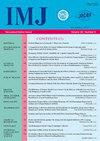下腔静脉内生长的肾细胞癌围手术期死亡因素分析
Q4 Medicine
引用次数: 0
摘要
下腔静脉肿瘤的手术困难病例经常发生,因为这种干预的特点是技术困难和严重的术中并发症。其中最危险的包括大出血、急性心力衰竭和肿瘤团块引起的肺栓塞,这是围手术期死亡的最常见原因。腔静脉切除是一种特殊的手术,几乎在任何阶段都可能伴有大出血。回顾性分析108例肾细胞癌转移至下腔静脉的手术原因及死亡频率。这种病理围手术期死亡率预后的可靠因素已经确定。表征肿瘤血栓特征的因素,以及与患者一般情况相关的参数,已被发现是最重要的。本研究结果显示,采用无人工循环的手术方法治疗腔静脉肿瘤血栓围手术期死亡率为8.3%。本研究的患者群体中有相当比例的III - IV级所谓的“高”血栓,血栓侵入下腔静脉壁,以及腔内肿瘤的逆行扩散。主要死亡原因为急性心力衰竭、术中出血、肺栓塞伴肿瘤肿块和急性肾功能衰竭。围手术期死亡率的预后价值通过以下血栓因素来证明:血栓“高”水平、腔内肿瘤侵入腔壁、腔血完全阻塞的迹象。死亡率客观上受术前严重心力衰竭、肺栓塞体征的影响。关键词:下腔静脉,肿瘤血栓,肾细胞癌,腔静脉切除,致死率。本文章由计算机程序翻译,如有差异,请以英文原文为准。
FACTORS OF PERIOPERATIVE MORTALITY IN PATIENTS WITH GROWING RENAL CELL CARCINOMA IN INFERIOR VENA CAVA LUMEN
Difficult surgical cases of tumors of the inferior vena cava occur very often, because this intervention is characterized with technical difficulties and severe intraoperative complications. The most dangerous of these include massive bleeding, acute heart failure, and pulmonary embolism by tumor masses, which are the most common causes of perioperative mortality. Vena cava trombectomy is a special operation that can be accompanied by heavy bleeding at virtually any stage. The causes and frequency of mortality in 108 patients operated for renal cell carcinoma with growing to the inferior vena cava were retrospectively analyzed. Reliable factors for the prognosis of perioperative mortality in this pathology have been identified. Factors that characterize the tumor thrombus features, as well as parameters related to general condition of a patient, have been found to be of the greatest importance. The results of the study showed that the level of perioperative mortality in caval tumor thrombi is 8.3 % when using surgical methods without artificial circulation. The presented patient population contained a significant proportion of so−called "high" thrombi of III−IV levels, thrombi invading the wall of the inferior vena cava, as well as retrograde spread of intraluminal tumor. The main causes of death were acute heart failure, intraoperative bleeding, pulmonary embolism with tumor masses and acute renal failure. The prognostic value of perioperative mortality was demonstrated by the following thrombus factors: its "high" level, invasion of intraluminal tumor into the caval wall, signs of complete obstruction of caval blood flow. The mortality rate was objectively affected by severe heart failure, signs of pulmonary embolism before surgery.
Key words: inferior vena cava, tumor thrombus, renal cell carcinoma, vena cava trombectomy, lethality.
求助全文
通过发布文献求助,成功后即可免费获取论文全文。
去求助
来源期刊

International Medical Journal
医学-医学:内科
自引率
0.00%
发文量
21
审稿时长
4-8 weeks
期刊介绍:
The International Medical Journal is intended to provide a multidisciplinary forum for the exchange of ideas and information among professionals concerned with medicine and related disciplines in the world. It is recognized that many other disciplines have an important contribution to make in furthering knowledge of the physical life and mental life and the Editors welcome relevant contributions from them.
The Editors and Publishers wish to encourage a dialogue among the experts from different countries whose diverse cultures afford interesting and challenging alternatives to existing theories and practices. Priority will therefore be given to articles which are oriented to an international perspective. The journal will publish reviews of high quality on contemporary issues, significant clinical studies, and conceptual contributions, as well as serve in the rapid dissemination of important and relevant research findings.
The International Medical Journal (IMJ) was first established in 1994.
 求助内容:
求助内容: 应助结果提醒方式:
应助结果提醒方式:


